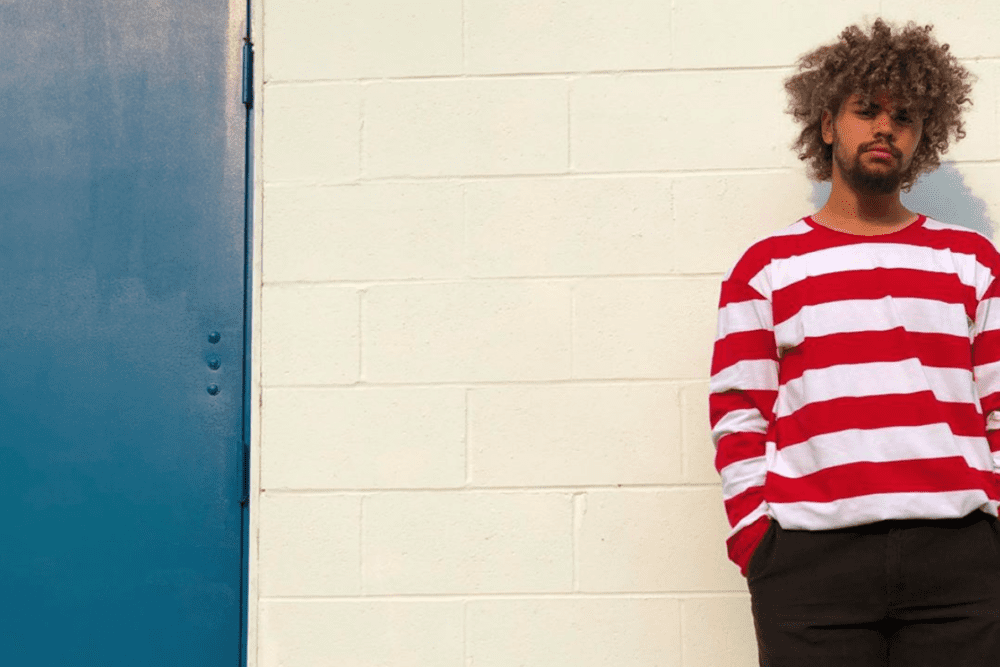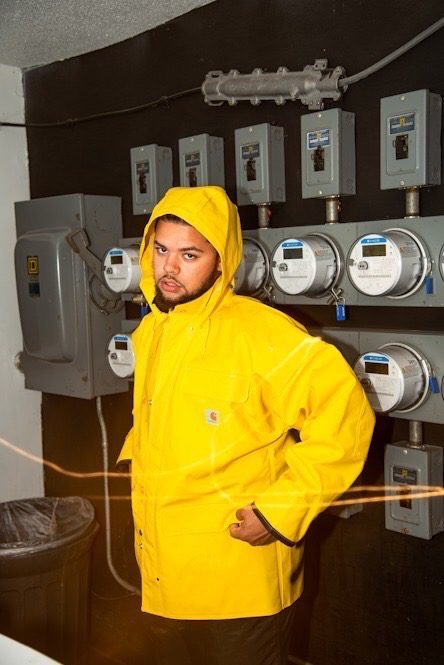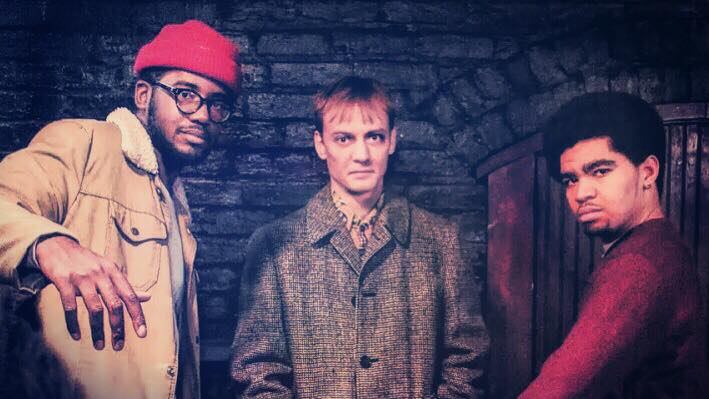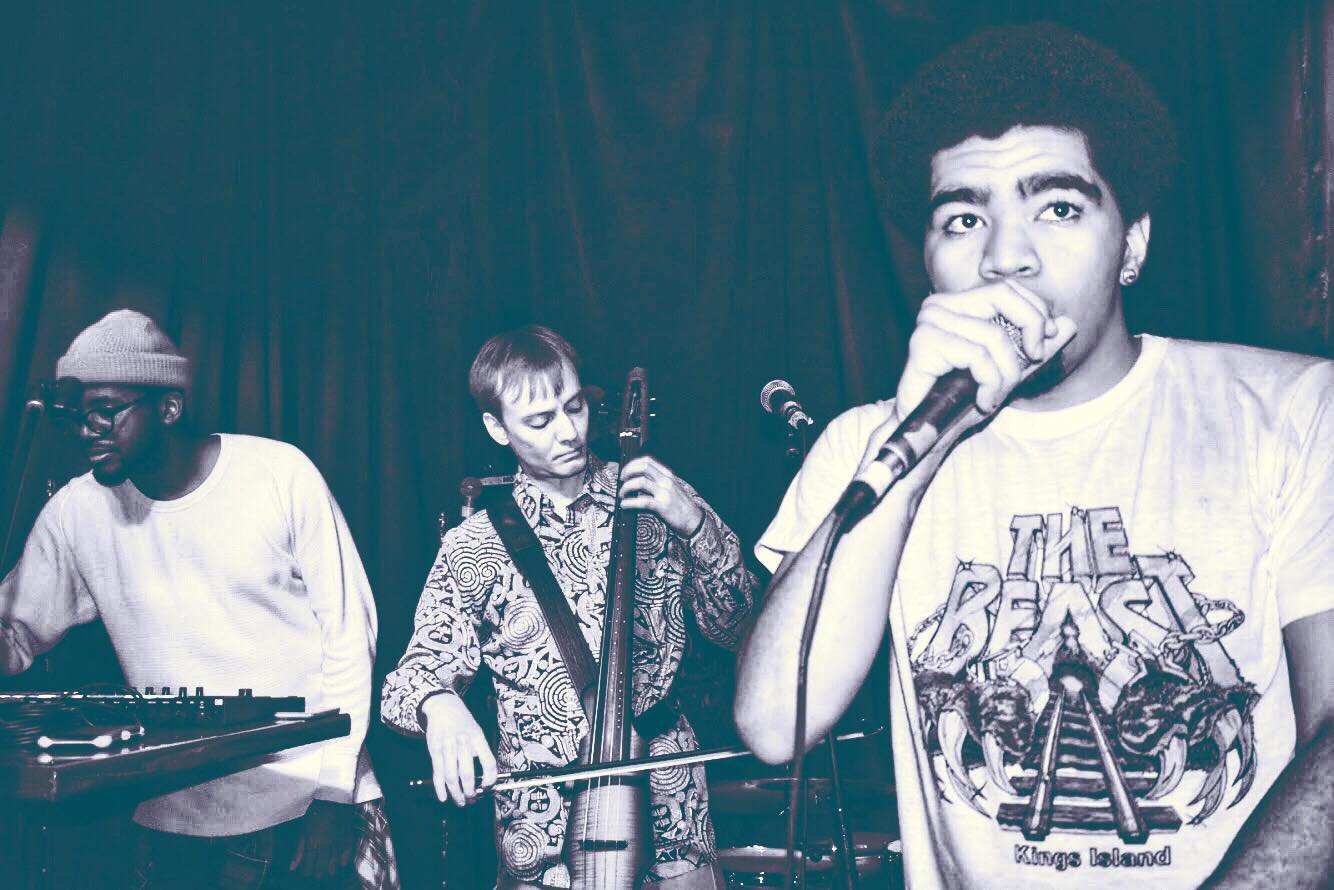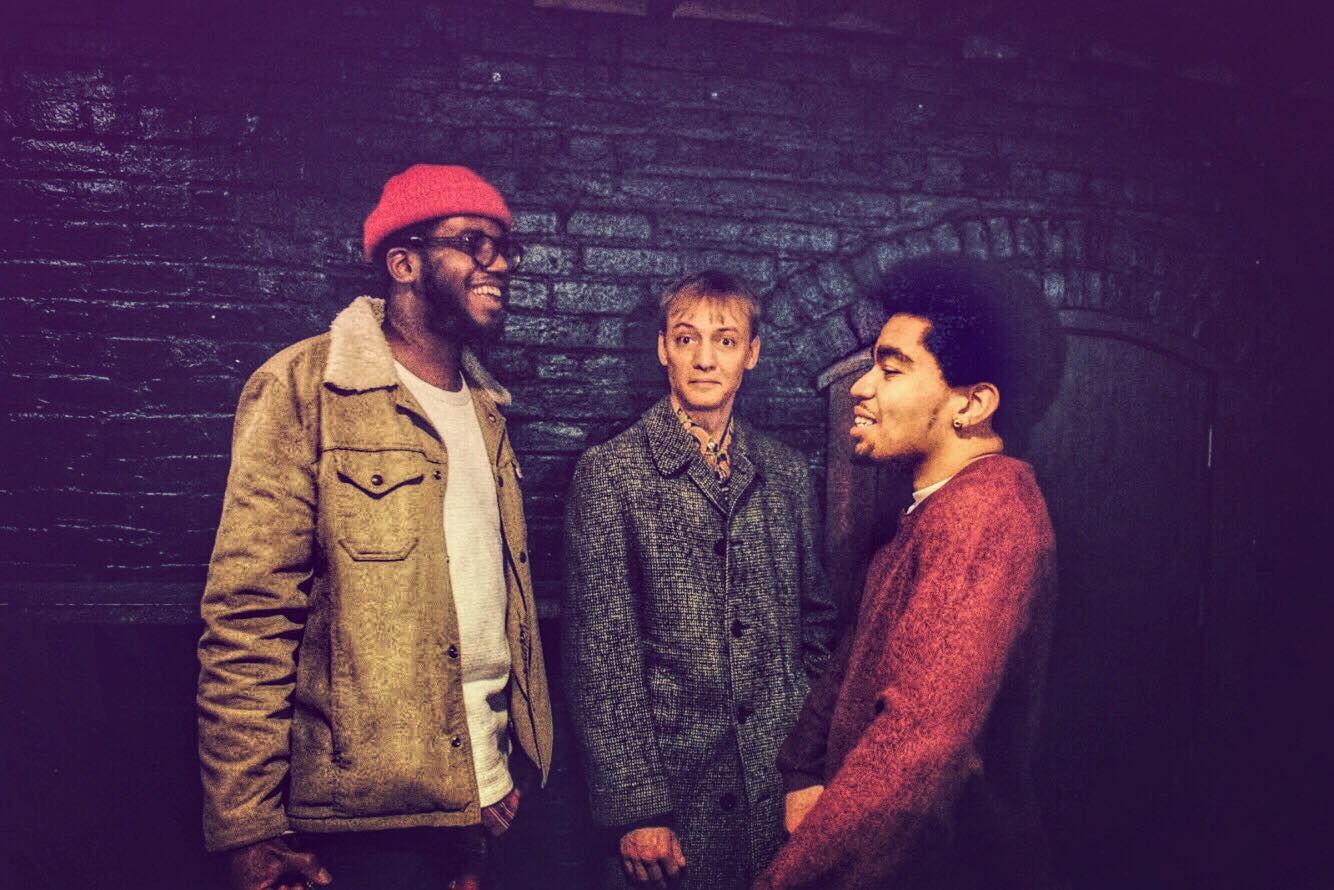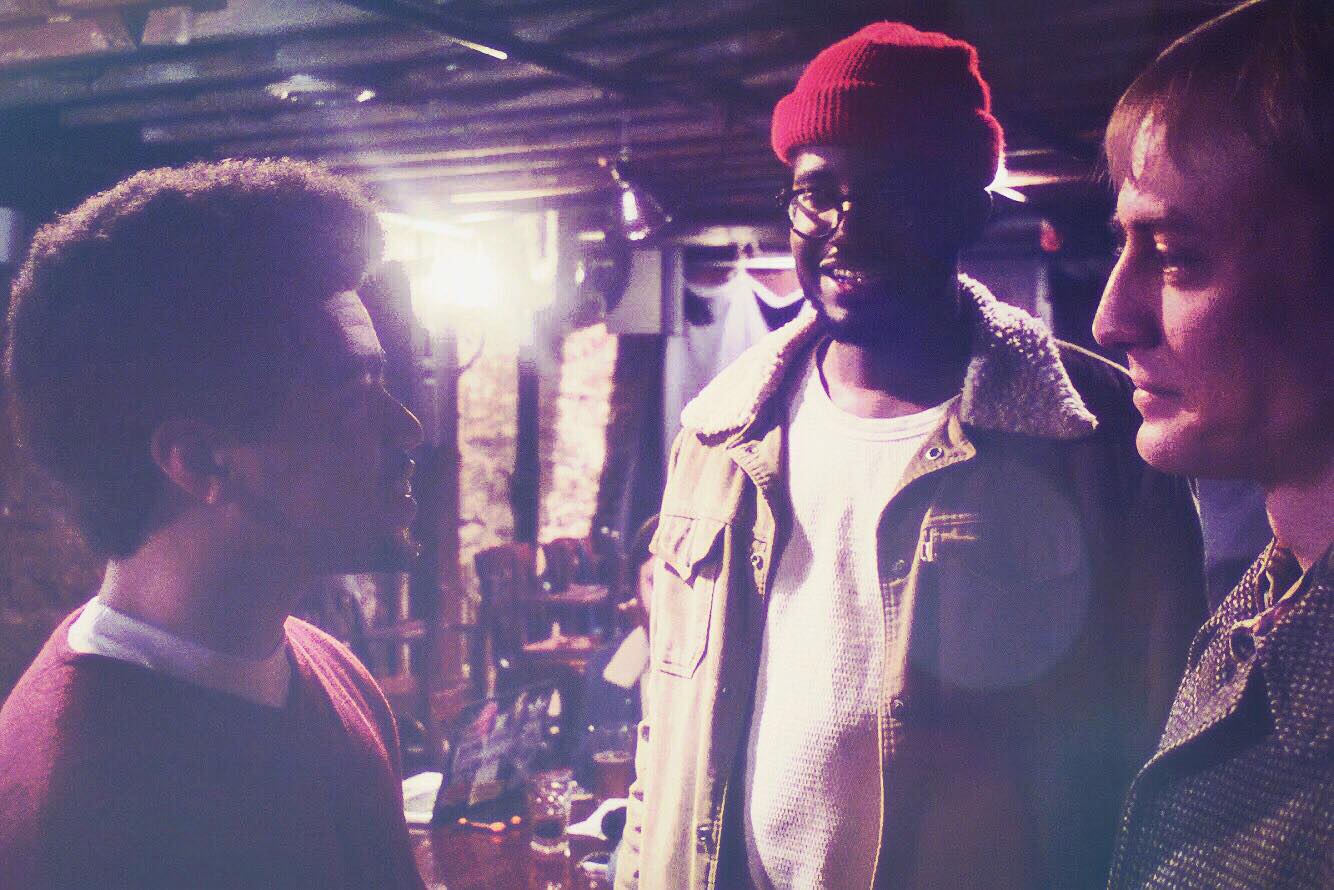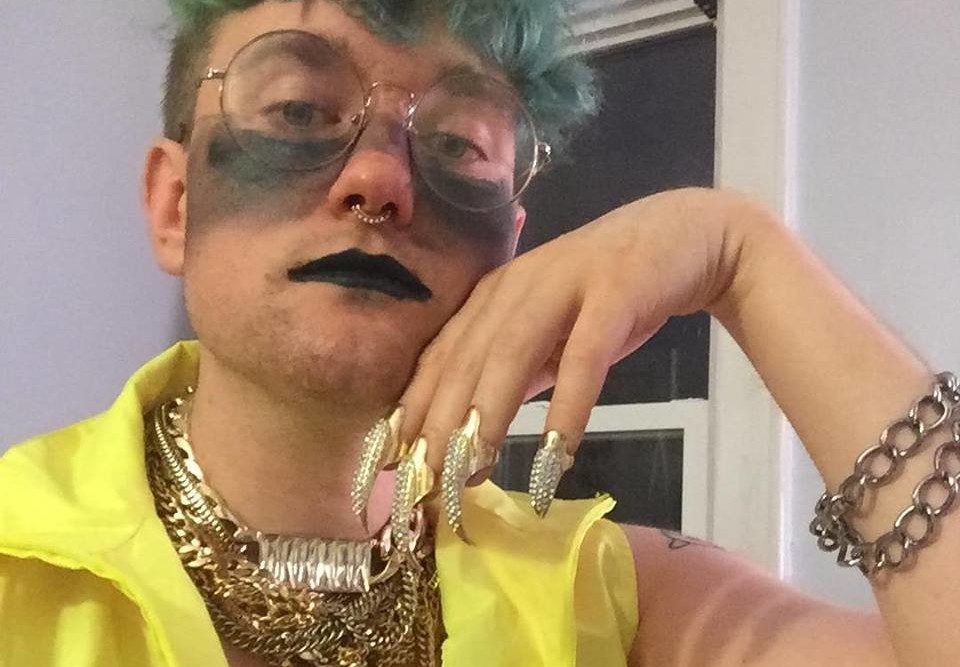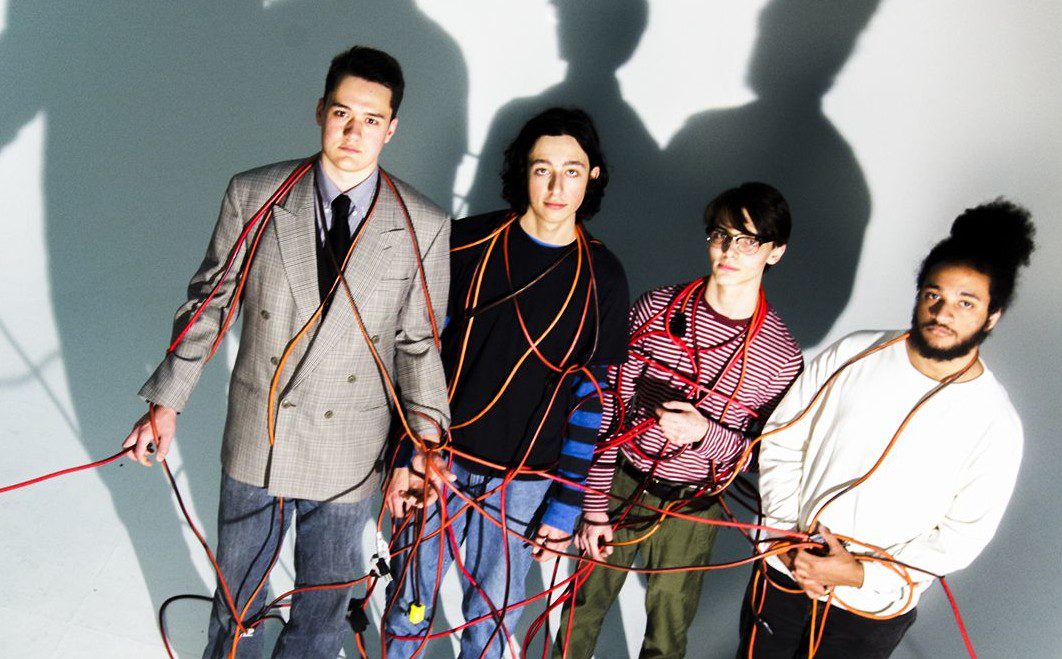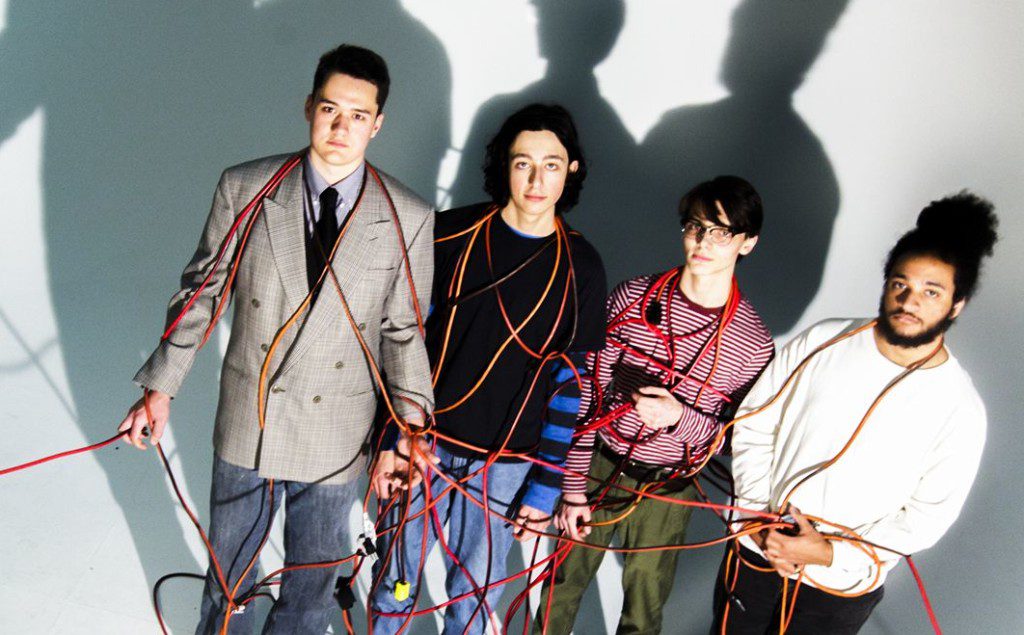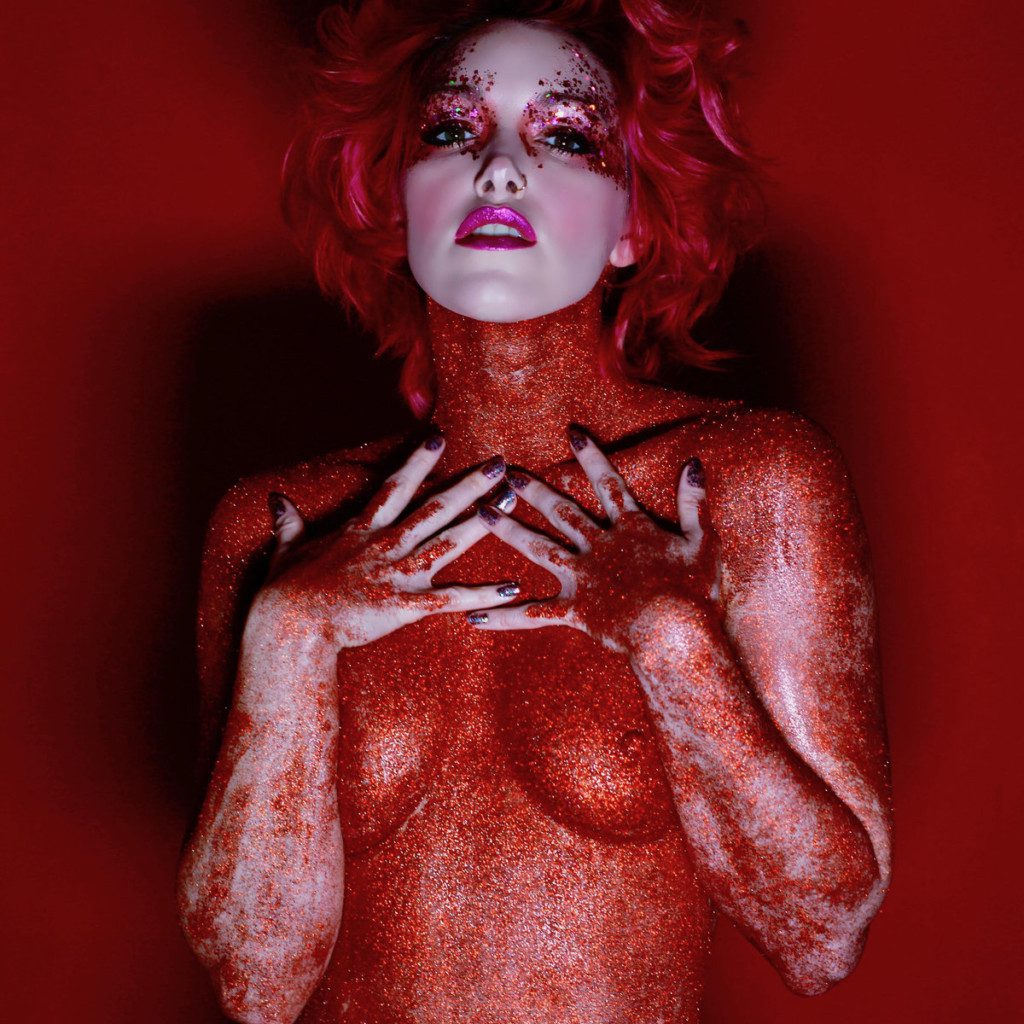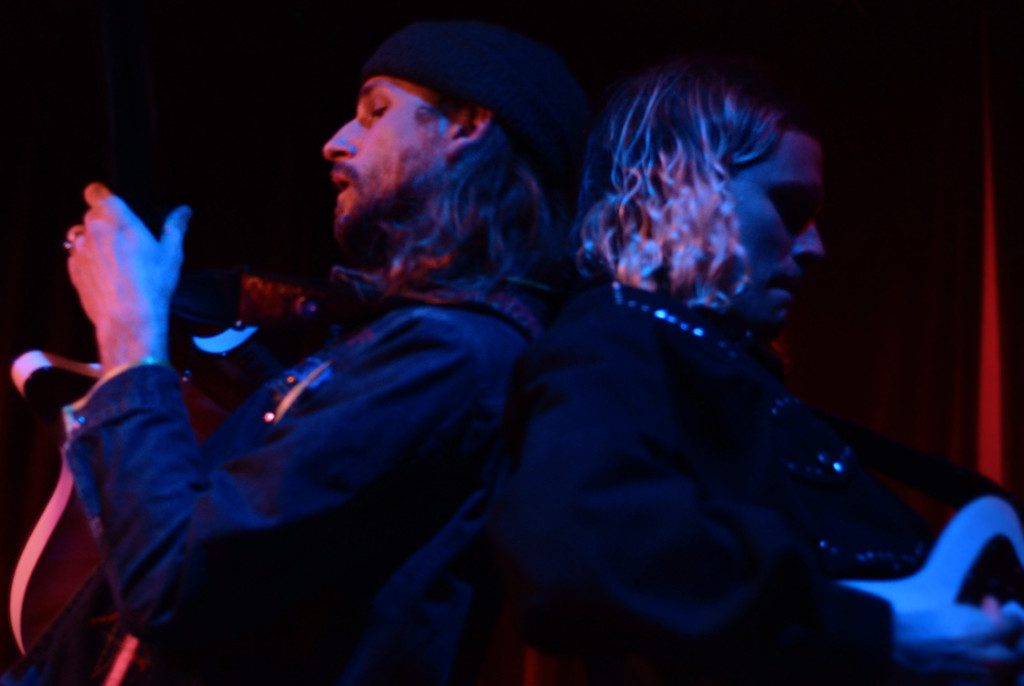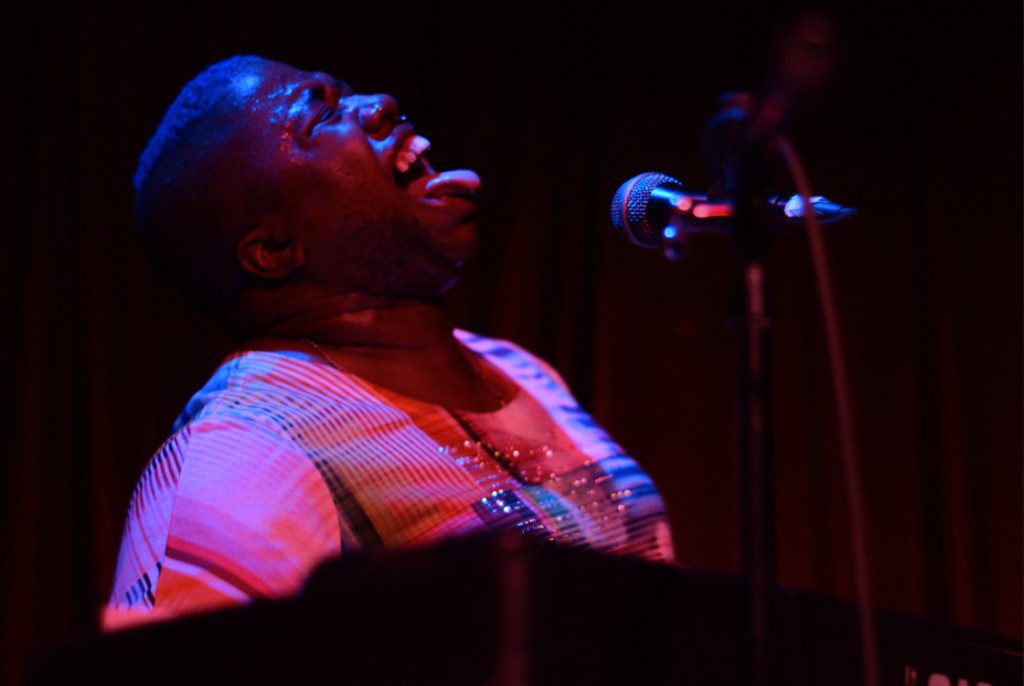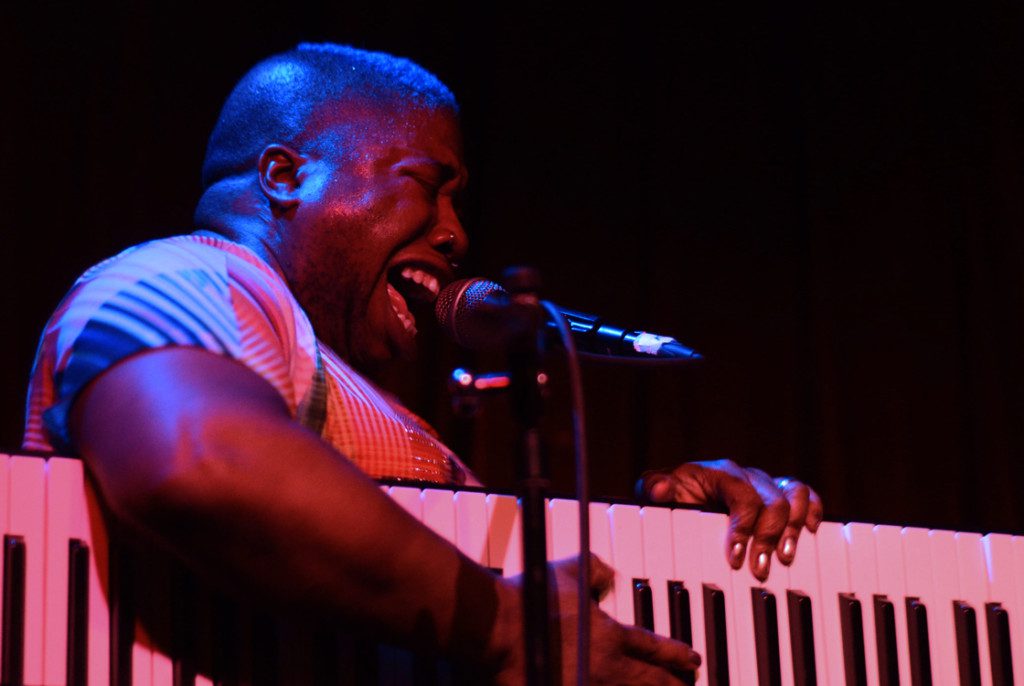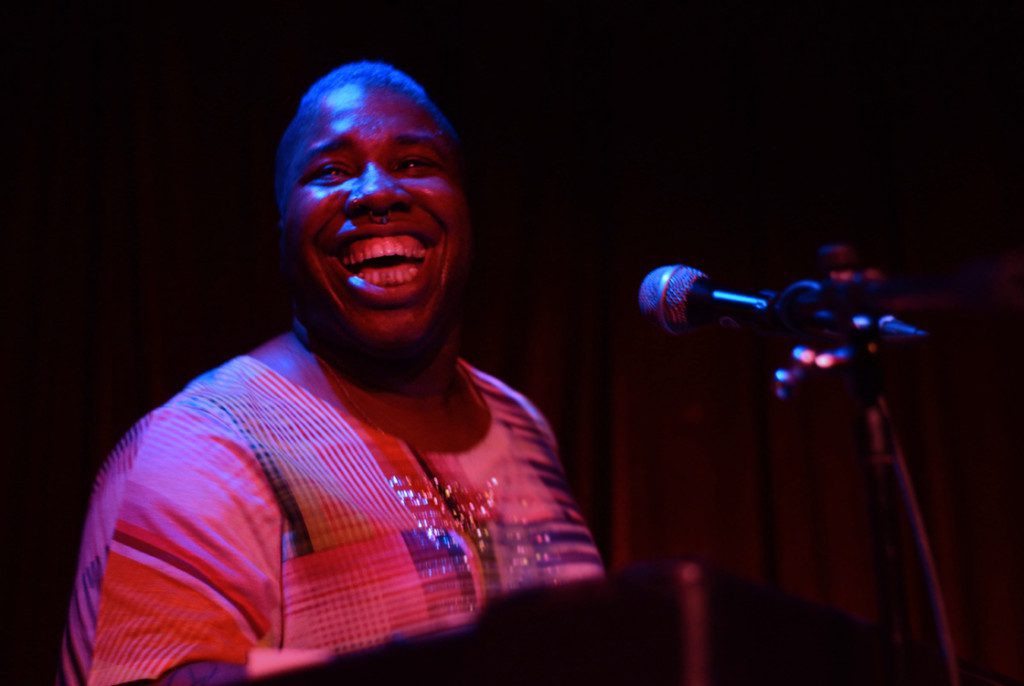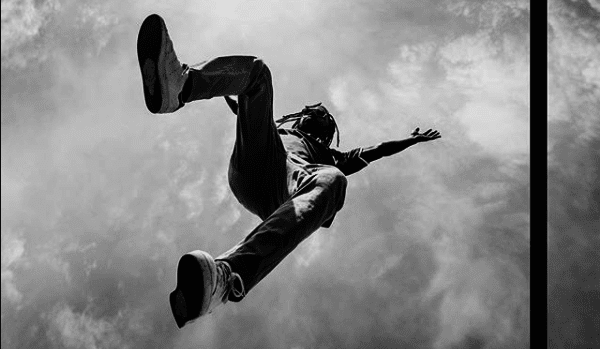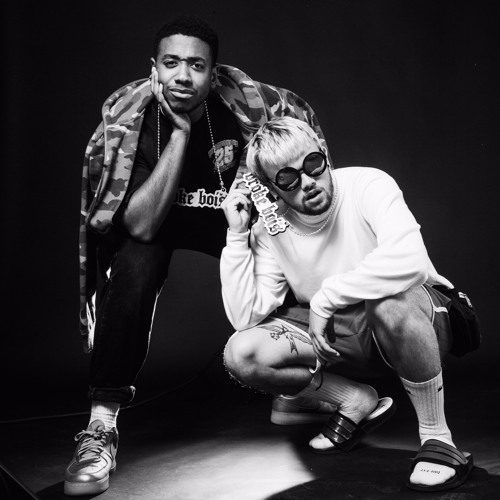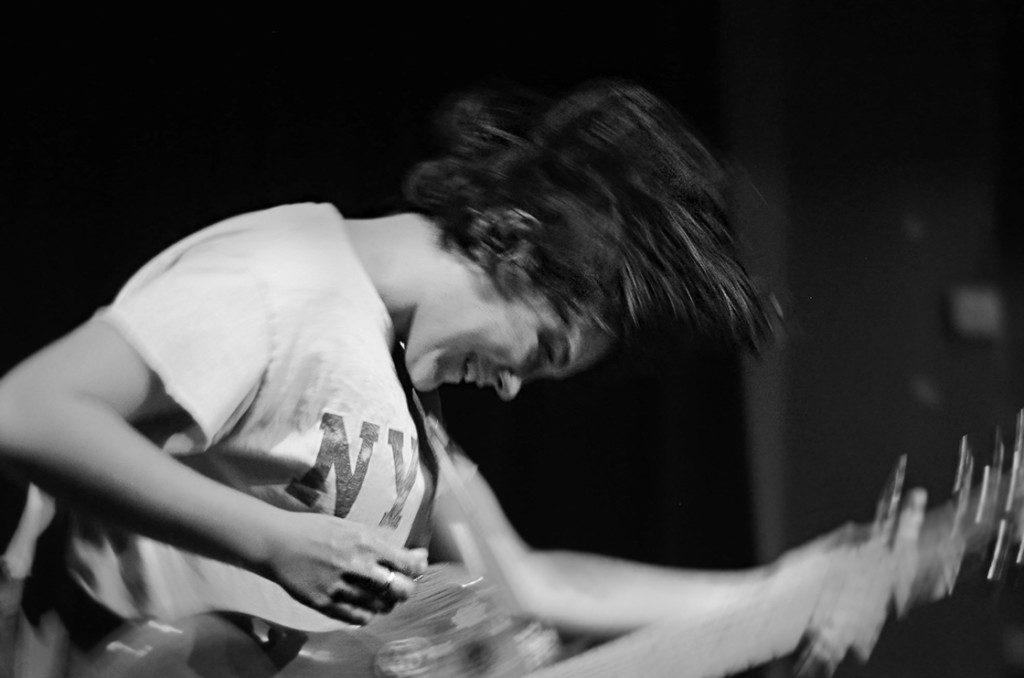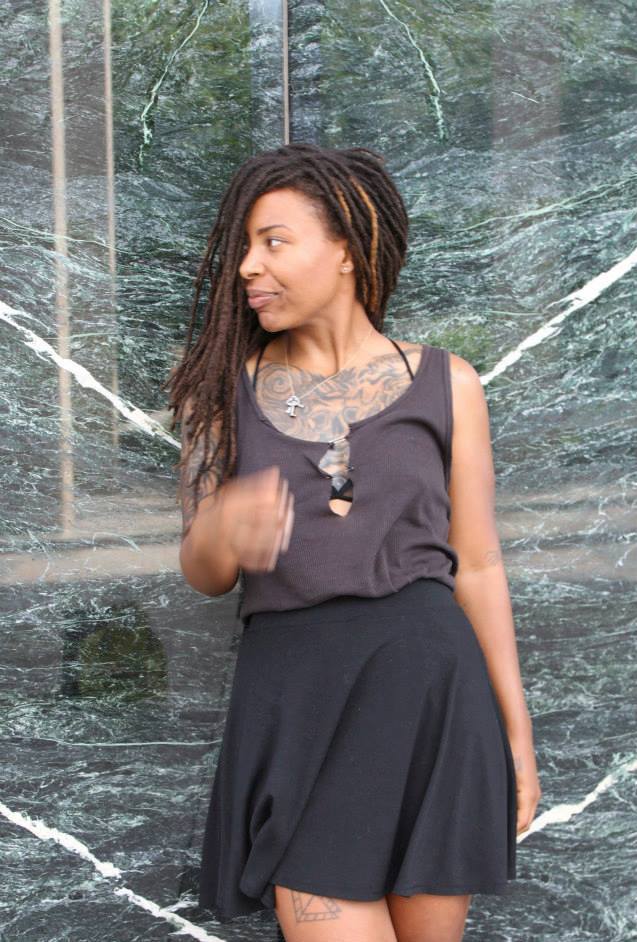PREMIERE: Shannon Clark & the Sugar Triumph Over Loss on “Let It Ride”
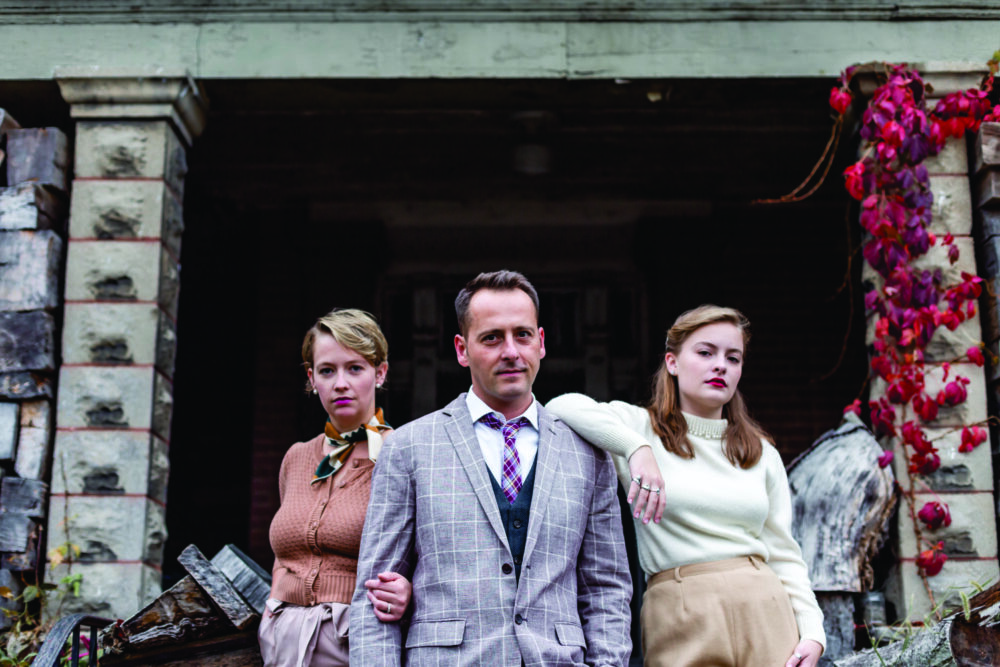
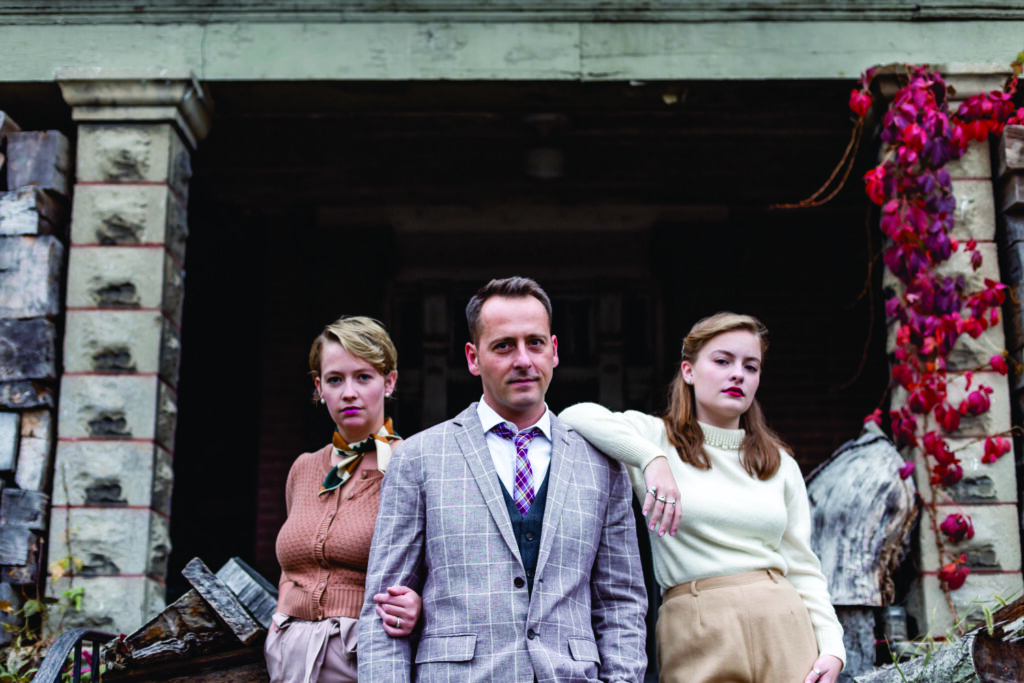
Shannon Clark & the Sugar hail from Greenville, Ohio, home of the American sharpshooter Annie Oakley. It’s a connection that feels natural when listening to their upcoming album Marks on the Wall, a collection of what lead singer Shannon Clark often calls “Midwest Americana Soul.” The record (out May 14, 2021), twists and turns in terms of genre, but their latest single “Let it Ride” may be the most personal, a shot to the heart. It’s a diary entry straight from Shannon’s past and a call to action for the future.
“I’ve buried a daughter way before her time/I’d take her place a million, million times/but I let it ride,” Shannon sings, his eldest daughter Navie Clark’s husky voice vibrating slightly as it echoes his own. The pace of the drums, played by Shannon’s wife Brittany Clark, is steady, acting as a form of meditation throughout. It’s a song that could easily play in the back of a nouveau western film, the story behind the lyrics lost in moving images. But once a listener’s ear tunes in, the story can’t help but move into focus.
“Everything in that song, every line that I sing in that song is real,” Shannon explains. “I do have a sister that lives in Modesto, I don’t ever get to see her. She’s my half sister. My dad, who I didn’t meet ’til I was 24, I found him, he didn’t find me. My mom went through a lot of abusive relationships when she was younger.” For Shannon, the journey of this particular blues song is exploring the negative elements of his past before shrugging them off triumphantly – leaving them not in the dust, but as a carefully placed notch in the belt of existence.
Shannon’s love of music started from a childhood soundtracked by classic country and rock ‘n’ roll acts, from Patsy Cline to Queen. His mom was a radio disc jockey for fifteen years, working at a few major stations in Dayton, Ohio. “She was really well known around the area,” Shannon says. “She was a single mom, so I would go to the radio station – she got to drag me along because she didn’t always have a sitter. She’d work the late shift, I’d be coloring on the floor of the radio station while she was spinning records. That’s kind of where I got my start I guess, my love of music. She’d drag me to concerts, make me sit in the press box with her until it was over.” Shannon even met Reba McEntire and Vince Gill, but remembers his 6th grade self being impatient, angsty, and less-than-impressed.
Shannon and Brittany grew up in the same small town, even went to the same church, but ultimately met playing music. “I was playing in a band and we had a big show coming up. Our band broke up and I needed a drummer to fill in,” Shannon remembers. “I asked her because someone said she was playing drums, and she did, and we became really good friends. That grew into more; 16 years later and we’ve got these guys running around.”
It was a moment of kismet that mirrored Brittany’s newly found passion for drumming. She had been practicing for a few years before she joined the band, but performing was never top of mind – her first show was the one she performed with Shannon. “It was kind of an accident because my uncle had this old drum set that he’d had when he was in high school,” Brittany recalls. “It was from the sixties. Just this old piece of crap, full of dust. He was like ‘Hey if you want this, take it. Otherwise it’s going to the trash’ right? So I took it, drug it home, cleaned it up and put new heads on it.”
She practiced by playing along with her CD collection, particularly Sheryl Crow. “I would listen to these Sheryl Crow albums and I would learn every single song,” she says. “I would just play religiously. I would come home from school, I wouldn’t even do my homework, I would just go down and play drums for two hours. I know I drove my parents crazy… There wasn’t really a motivation to be in a band. I just loved playing. It was an itch I had to scratch. No lessons – Sheryl Crow taught me.”
The band started out as a pop punk group called Everybody Else Wins. Brittany was 16 when they recorded their first record. “I always kind of wrote the same way, but I put it behind heavy guitar riffs and catchy melodies,” Shannon said of the time period. “My love for music was always deeper than what I was doing then. That was what was popular. When you’re young you don’t always have a lot of depth of knowledge. It took me ’til later to realize that wasn’t the kind of music I really loved.”
The band was on the move, touring and performing at Warped Tour in 2006 and 2007 on the Ernie Ball Stage. Then Shannon and Brittany’s second daughter passed away, and their hearts just weren’t into touring. The Clark family kept creating music, but kept it at home, teaching eldest daughter Navie how to sing harmonies to Ryan Adams songs.
“I started playing guitar when I was younger,” Navie Clark tells Audiofemme. “My dad bought me a guitar and I was maybe four or five, and I kinda always had one lying around. But I didn’t really get serious about playing ’til about a year ago, year and half. I think I was getting into new music, my taste was expanding and I wanted to be able to play this music I was hearing. And I think piano, we just had this gap in the band. We needed someone to play.”
“I’m proud of her because she has a record player and she plays good records, but she does like Harry Styles,” Shannon says. “It’s my guilty pleasure music,” Navie responds with a grin.
For the last three years, the family has performed as Shannon Clark & the Sugar, bringing together Shannon’s love of Glen Hansard and Amos Lee, Brittany’s love of John Prine, Bob Dylan and Brandi Carlile, and Navie’s love of old-school Dolly Parton.
Their upcoming album Marks on the Wall is the first album Shannon and Brittany have sat down in a studio and written together; previously, Shannon took the lead on songwriting. “[Brittany’s] always felt self-conscious about writing,” Shannon explains. “She didn’t think she could be a writer – she didn’t have that creative spark, she told me. These are her words, not mine. As we progressed, I’m coming in constantly, she’s doing dishes, taking care of the kids, and I’m like ‘Hey check this out, listen to this song, listen to this riff,’ and she’d always give me ideas and pointers. Our whole marriage she’s done this, so she’s really been writing with me since we were first together.”
As the album progressed, Navie also began finding her place in the band, taking the harmonies her parents wrote and rearranging them. The resulting music is layered: a father’s voice speaking his truth, his daughter’s voice echoing it back to him.
Navie has also had to step up in a big way for a sixteen-year-old musician. Michael Chavez, John Mayer’s former touring guitar player, played guitar on the record. Navie takes his spot in the band’s live performances, singing not only the harmonies she’s written, but also the guitar licks Chavez created during the recording process.
The band worked with Grammy award-winning producer, Mark Howard (Bob Dylan, U2, Neil Young, Tom Waits, Lucinda Williams, Emmy Lou Harris, Willie Nelson) on the record. It was Howard who insisted on a recording rule: three takes, we’re done. “This record’s not perfect; it’s not supposed to be,” Shannon says. “We wanted to capture moments so the performances are raw and they’re emotional and they’re live. We sang together in the room instead of separate tracks. I feel like you can feel that on this record and that’s what I wanted.”
Brittany was behind the idea of an imperfect recording, too, adding, “If you go to a live performance you’re going to hear chairs squeak or something off. [The record has] that live feeling.”
Much of the record is deeply personal to the Clark family, touching on personal histories and deep-seated pain. It’s the reaction to the pain they’re interested in exploring in songs like “Let It Ride.”
“It doesn’t matter when the rain comes, as long as you get dry,” Shannon says of the song. “Everyone’s gonna have something that happens to them. I think a lot people can hold on to those things their whole life and it effects their lives. Those people hold power and those situations hold power over that person. They can never be who they were meant to be, they can never develop into a regular beautiful person because they’ve got all this baggage they bring with them constantly. And I think that it’s important to let it go.”
“Let it ride,” Brittany and Navie echo in unison.
“Once you can commit it to a recording, that’s therapeutic too,” Brittany says. “You can get it off your chest, it’s concrete somewhere and you don’t have to carry that.”
The Clark family is disturbingly well-adjusted, easily joking with one another, poking each other about a recent fight they had just before the interview (Brittany spent the majority of the conflict banging on her drum set). They speak a common language: music, the driving force in their lives. It’s the medium in which they speak to one another and to their audience. For now, with COVID-19 still raging throughout the country, live shows are at a standstill, but the band is chomping at the bit to perform some mini-tours, just as they did when they were starting out. In the early days, they’d leave their young children with a family member.
“We would try to go play three or four shows, and come back,” Shannon recalls. “We never wanted to be bad parents – that was more important than the music to us.” Now that Navie is in the band, they don’t have to worry about that too much – and Shannon Clark & the Sugar have never sounded so sweet.
Follow Shannon Clark & the Sugar on Instagram for ongoing updates.

